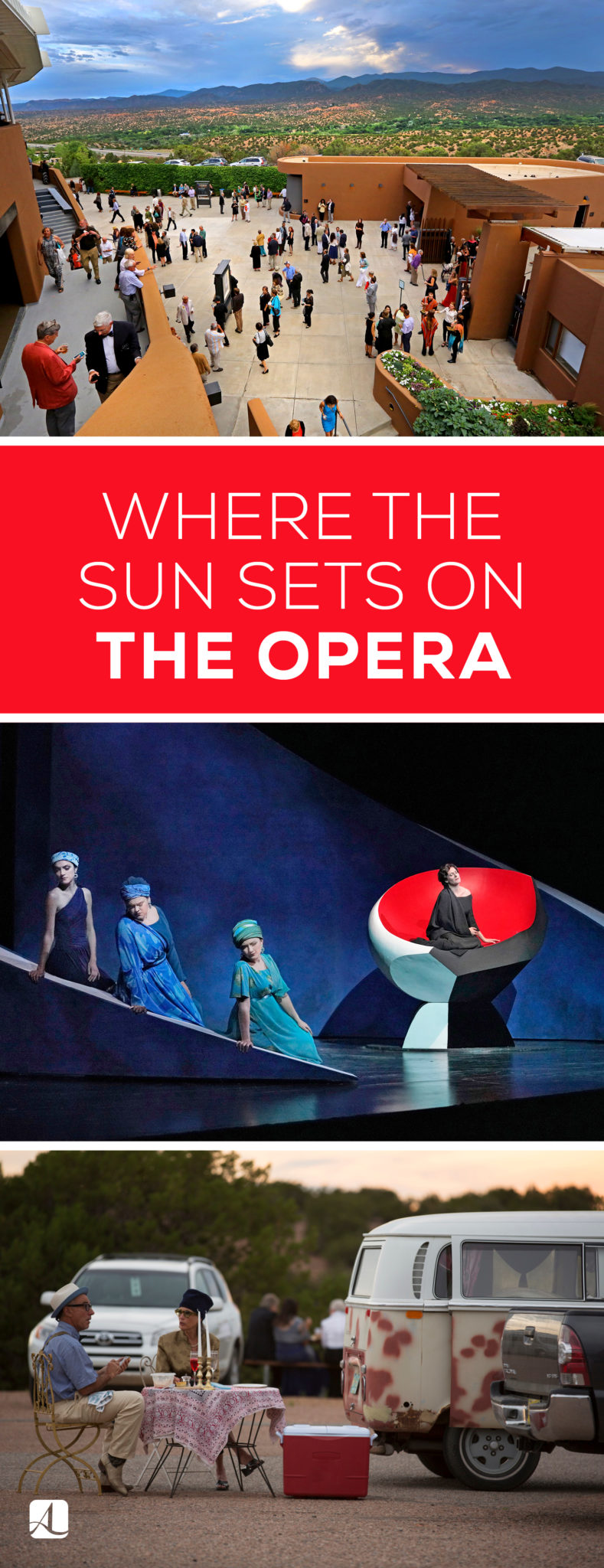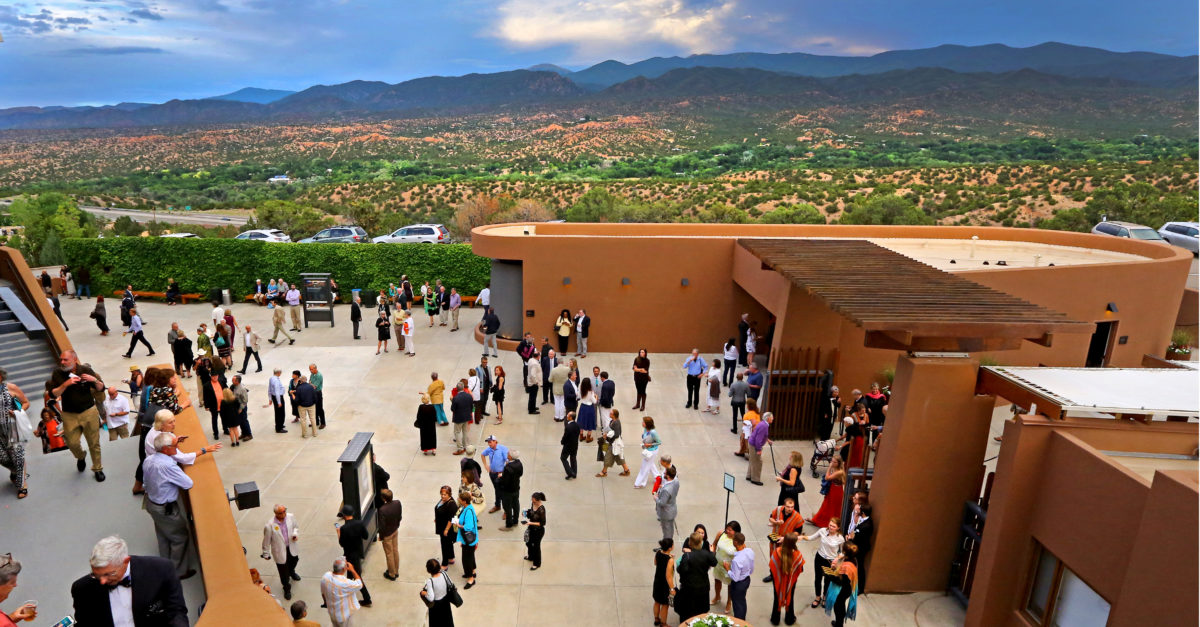Where The Sun Sets On The Opera
There are a few things you might expect to see and hear while traveling through the New Mexico desert—the crunch of the dry dirt under your feet, mesas rising up from the ground like stone skyscrapers, and the cry of a coyote, to name a few. The sounds of dramatic opera compositions by the likes of Mozart, Wagner, and Stravinsky? Probably not.
But if you travel approximately seven miles north of the city of Santa Fe—nestled right in between the Jemez and Sangre de Cristo Mountains—you’ll encounter an unlikely sight that might even be mistaken for a mirage in the dry heat. Here the Santa Fe Opera plays host to one of the most prolific summer opera festivals in the world.
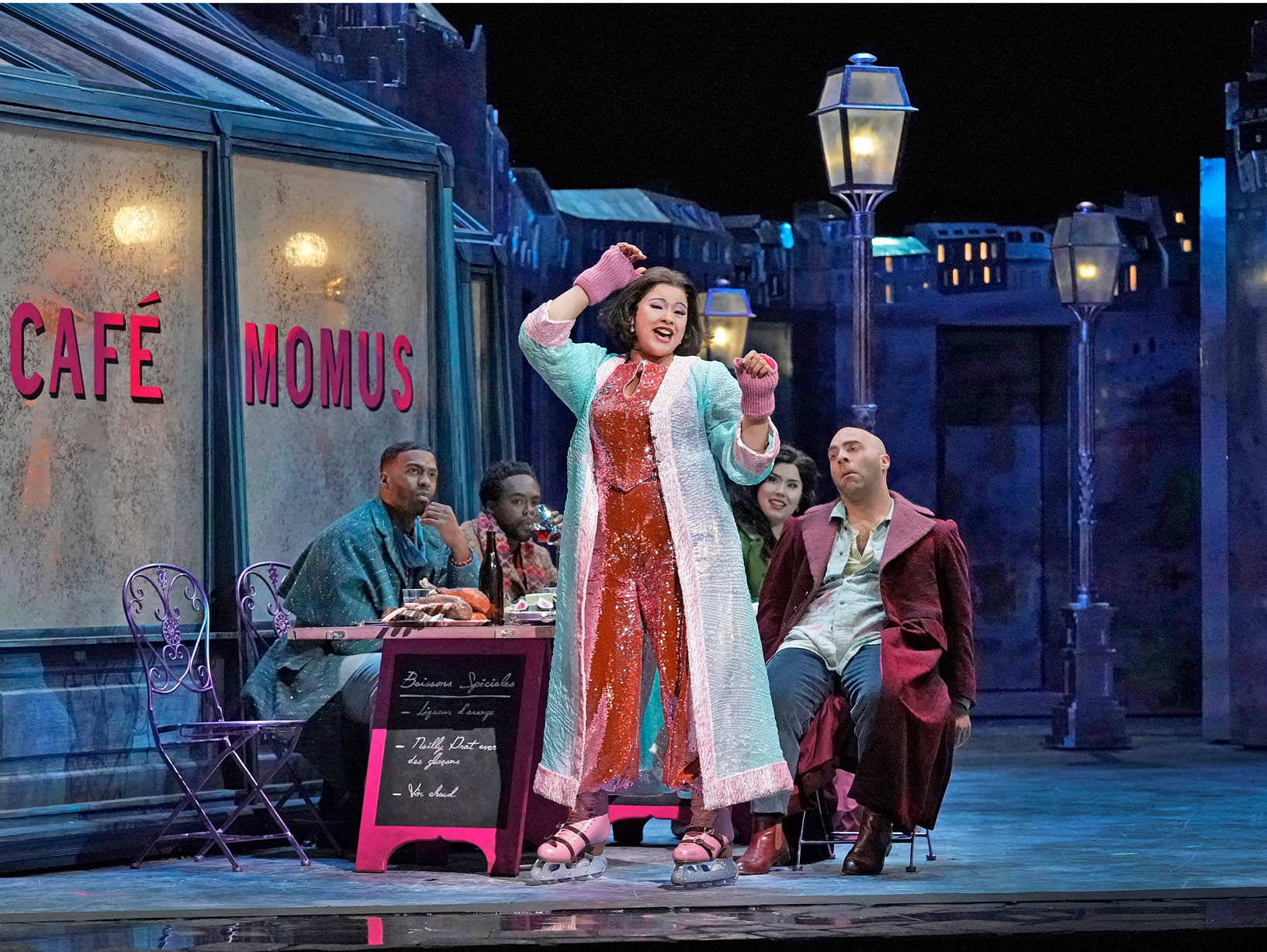
“A Perfect Marriage”
In the twentieth century, much of the land around Santa Fe was underdeveloped. Farms and cattle, but not much else, dotted the landscape—that was, until New York-born musician and conductor John Crosby had a vision. He had spent a portion of his childhood studying at the Los Alamos Ranch School outside of Santa Fe, and he fell in love with the vastness and beauty of the landscape. When he returned to the area later in life, he envisioned a place that would bring together the natural vistas and the magnificence of live music—and the Santa Fe Opera was born. Construction began on the opera’s original 480-seat theater in 1956, and by 1957 the first summer festival kicked off.
The original theater was much smaller than its modern counterpart, but it would play host to some of its most important performances. “One of the things that put the Santa Fe Opera on the map was that Crosby was able to bring world-renowned composer Igor Stravinsky to the opera for several summers,” says Santa Fe Opera general director Robert K. Meya. “To have someone of that caliber involved really raised the artistic profile of the company right off the bat.” Santa Fe hosted performances of some of Stravinsky’s most famous operas for more than six years, including the first North American performance of Persephone in 1961.
After a fire struck the opera in 1967, it was rebuilt into a 1,889-seat theater just a year later and rebuilt again in 1998 into a 2,126-seat theater (with 106 standing-room spots). The most recent project even included the addition of LCD touchscreens on each seat and in standing-room areas, and each screen displays translations of the performances in Spanish and English. Despite this increase in size and accommodations, there is a common thread between the three theaters—an open-air back and sides, which helps maintain its connection to the environment and provides a naturally dramatic backdrop. “Because of the open-air concept and how the productions are conceived, each performance is a perfect marriage of music and nature,” says Meya. “The nights are often warm, the air flows through the theater, and you can see the stars so clearly—it really is one of the most incredibly romantic places you can imagine, which adds to the experience of the productions.”
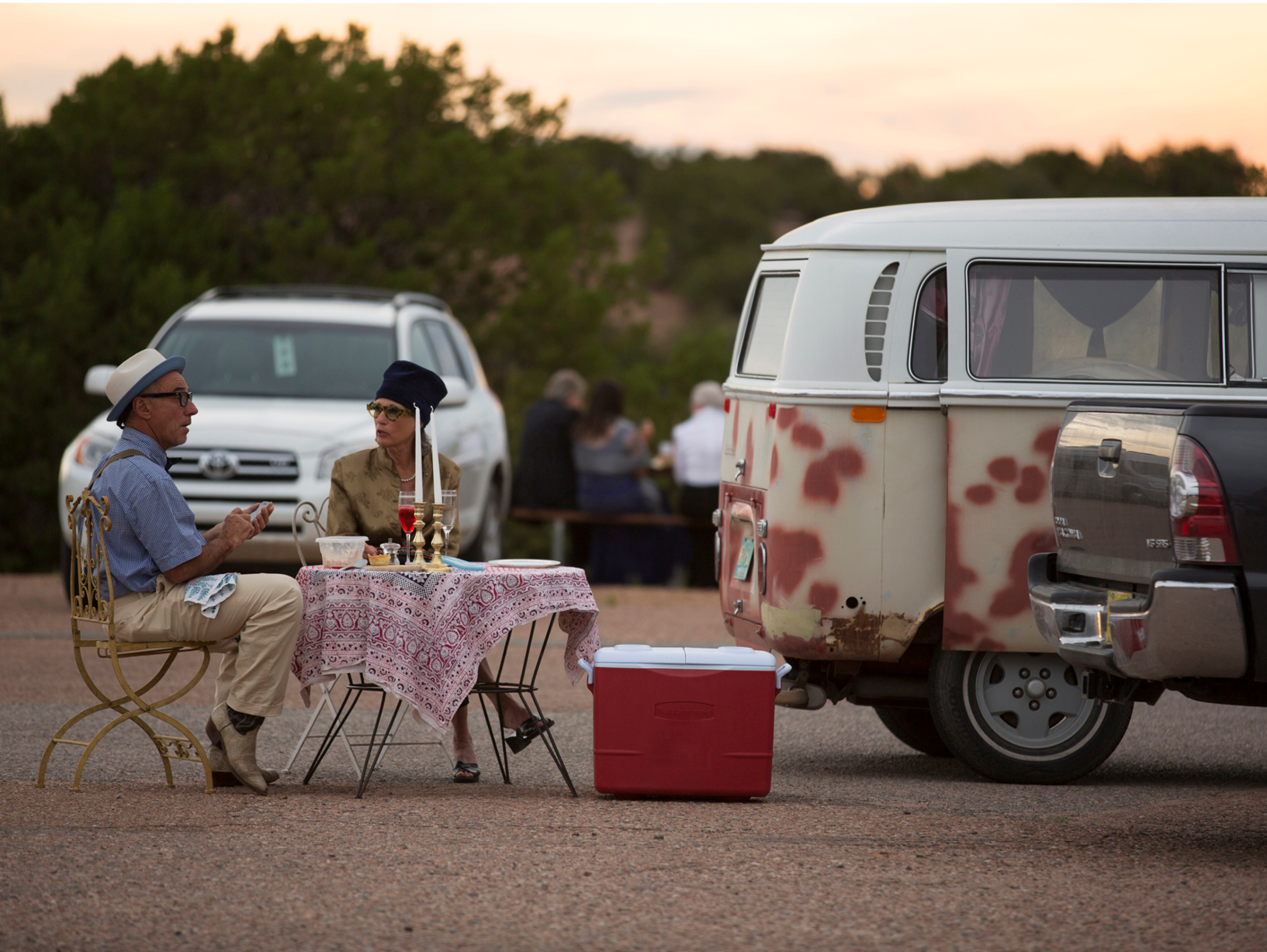
Come One, Come All
In addition to its awesome location, the Santa Fe Opera is exceptional in that it doesn’t just cater to longtime opera lovers. In an effort to preserve its art form, the organization works to make the opera feel accessible to all. During its busy season, the staff increases from seventy people to about seven hundred—including performers, orchestra members, and stage directors. Each season includes five new productions: the first two are selected to be attractive to a general audience, the third and fourth are typically more rarely performed operas but are still accommodating for both new and experienced patrons, and the final opera is often an American or world premiere.
The performances run from the first week of July to the last week of August. Near the end of the festival, all five operas are performed within the same week, giving visitors an opportunity to come back every night if they so choose. The festival attracts some 85,000 people each year, but, as it turns out, people aren’t just coming for the performances. Meya notes that one of the most exciting traditions in Santa Fe—and one of the things that sets it apart—is the opportunity for guests to tailgate before every show. “Tailgating has been a long-standing tradition for as long as the opera has been here,” he says. “The sunsets are unlike anything else in the world, and the opera, of course, is a call for celebration. People like to dress up and set up the most incredible spreads. It helps break down the barrier to entry, too, because it’s such a fun social event.”
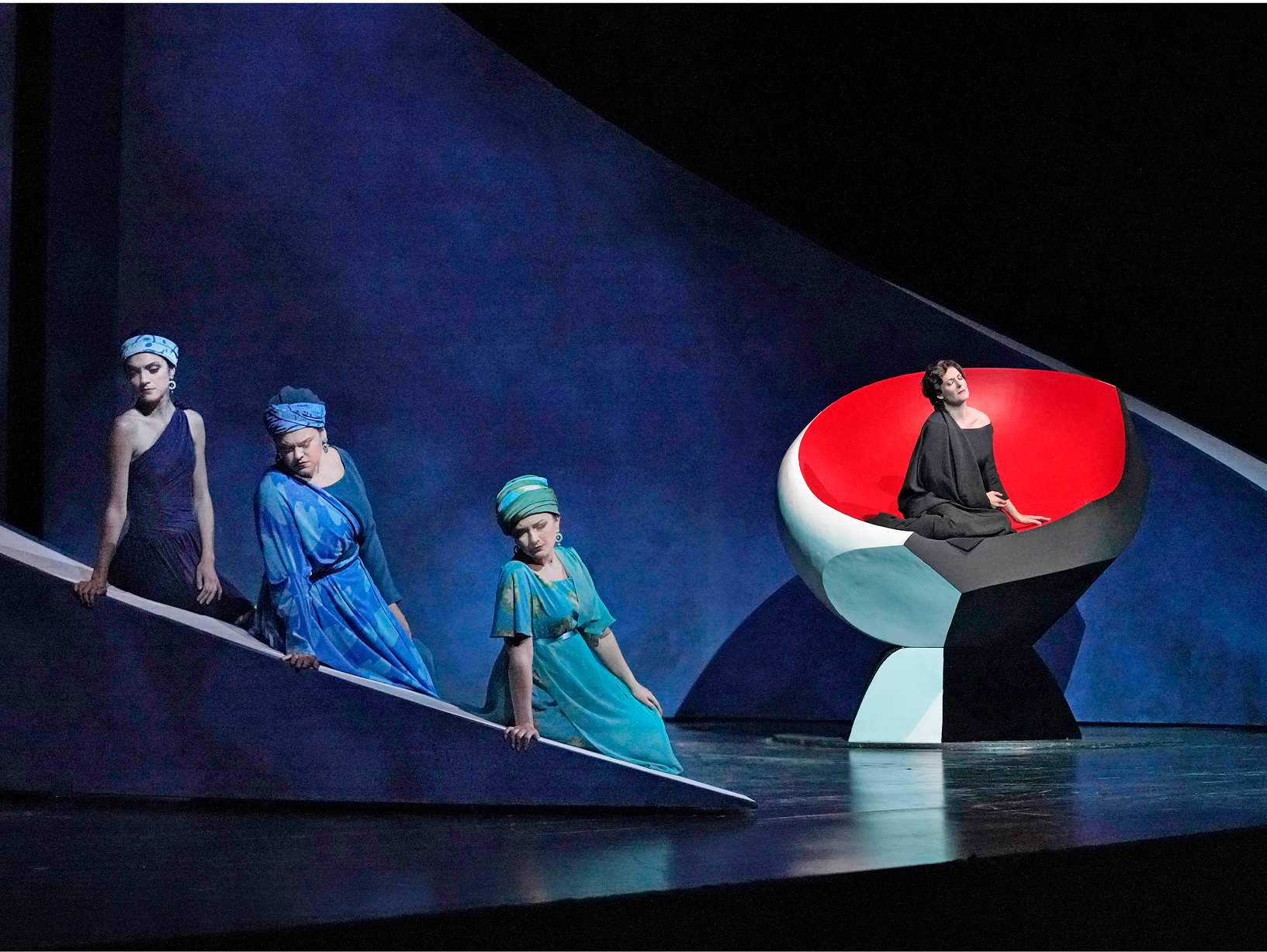
The opera sometimes has a reputation for being hoity-toity, but the Santa Fe Opera is anything but. In addition to putting on a diverse array of shows, the organization offers special programs and events for families and children, including discounted tickets on the opera’s Family Nights and Youth Nights throughout the summer, which bring young people behind the scenes for final dress rehearsals.
World-class performances are a driving force behind the success of any great opera house, but Meya says the importance of education and preservation can’t be discounted for the future success of opera as an art form. “Opera encompasses multiple art forms—a live orchestra, natural amplification of the human voice, costume design, and set design, among others,” he says. “We have to think about how to preserve these great components of art and succeed in having live experiences that take you outside of the digital realm. The value of live performance experiences is greater than ever before.”
For more info, visit santafeopera.org
